The Sawtooth Oak Tree (Quercus acutissima) is a fast-growing, deciduous tree that makes an excellent choice for those looking to add quick shade to their outdoor space. Belonging to the Fagaceae family, this species originates from the Himalayas, China, Korea, and Japan. Its distinctive canopy can reach over 40 feet tall, creating a broad, impressive spread as the tree matures.
The tree gets its name from its unique, serrated leaves, which resemble the teeth of a saw. In spring, the branches put on a show with clusters of golden, dangling flowers—more ornamental compared to most oak species. This combination of fast growth, striking foliage, and seasonal interest makes the Sawtooth Oak a standout addition to gardens and landscapes.
| Common name | Japanese Silkworm, Oak Sawthorn Oak, Sawtooth Oak |
| Botanical name | Quercus acutissima |
| Family | Fagaceae |
| Species | acutissima |
| Origin | Himalaya to China, Korea, Central & Southern Japan |
| Life cycle | Woody |
| Plant type | Houseplant |
| Hardiness zone | 6, 7, 8, 9 |
| Sunlight | Full Sun |
| Maintenance | Medium |
| Soil condition | Clay |
| Soil ph | Acid |
| Drainage | Well-Drained |
| Growth rate | Medium |
| Spacing | 24 – 60 ft. |
| Harvest time | Fall |
| Flowering period | Spring |
| Height | 3- 60 ft. |
| Flower color | Gold, Yellow |
| Leaf color | Green |
| Fruit color | Brown, Copper |
| Stem color | Gray, Silver |
| Fruit type | Nut |
| Fruit benefit | Showy |
| Leaf benefit | Showy |
| Garden style | Butterfly Garden |
| Uses | Lawn |
| Toxicity | Poisonous |
I. Appearance and Characteristics
Quercus acutissima, the sawtooth oak, is an Asian species of oak native to China, Tibet, Korea, Japan, Indochina (Vietnam, Thailand, Myanmar, Cambodia) and the Himalayas (Nepal, Bhutan, northeastern India). It is widely planted in many lands and has become naturalized in parts of North America.
Quercus acutissima is closely related to the Turkey oak, classified with it in the Quercus sect. Cerris, a section of the genus characterized by shoot buds surrounded by soft bristles, bristle-tipped leaf lobes, and acorns that mature in about 18 months.
Quercus acutissima is a medium-sized deciduous tree growing to 25–30 metres (82–98 feet) tall with a trunk up to 1.5 m (5 ft) in diameter. The bark is dark gray and deeply furrowed. The leaves are 8–20 centimeters (3+1⁄4–7+3⁄4 inches) long and 3–6 cm (1+1⁄4–2+1⁄4 in) wide, with 14–20 small saw-tooth-like triangular lobes on each side, with the teeth of very regular shape.
The flowers are wind-pollinated catkins. The fruit is an acorn, maturing about 18 months after pollination, 2–3 cm (3⁄4–1+1⁄4 in) long and 2 cm broad, bi-coloured with an orange basal half grading to a green-brown tip; the acorn cap is 1.5–2 cm (5⁄8–3⁄4 in) deep, densely covered in soft 4–8 millimeters (3⁄16–5⁄16 in) long ‘mossy’ bristles. It is closely related to Quercus cerris, classified with it in the Quercus sect. Cerris, a section of the genus characterized by shoot buds surrounded by soft bristles, bristle-tipped leaf lobes, and acorns that mature in about 18 months.
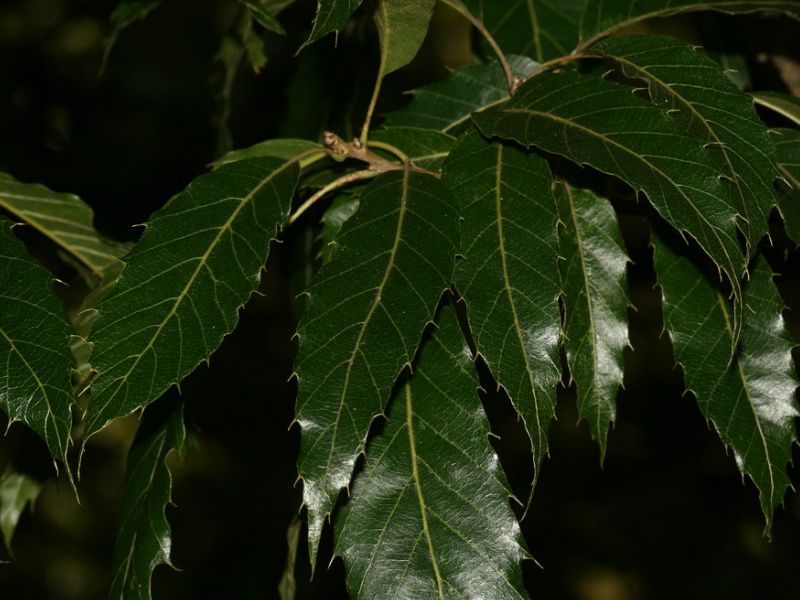
The acorns are very bitter, but are eaten by jays and pigeons; squirrels usually only eat them when other food sources have run out. The sap of the tree can leak out of the trunk. Beetles, stag beetles, butterflies, and Vespa mandarinia gather to reach this sap.
Sawtooth oak can cause toxic reactions in humans if it’s eaten, as with other members of the Quercus genus. The symptoms may range from mild to moderate. They are caused by the tannins present in the young leaves and acorns. Eating these plant parts can result in an upset stomach, constipation, bloody stool, diarrhea, excessive urination, and extreme thirst. As these trees are often used ornamentally in parks and yards, they’re often within reach of children, who might pick up young leaves or acorns and ingest them.
II. How to Grow and Care
Sunlight
Sawtooth oak thrives in conditions where it receives full sun, as this level of light intensity promotes vigorous growth and optimal health. However, it can also tolerate partial sun environments, where light intensity is somewhat diminished. Insufficient light may lead to reduced growth vigor and a less dense canopy structure. Sawtooth oak’s broad leaves are well-adapted to capture sunlight efficiently, positioning it as a sun-loving species. Ideally, it should be planted in open outdoor spaces that receive unfiltered daylight for the majority of the day to capture the needed energy for its robust development.
Temperature
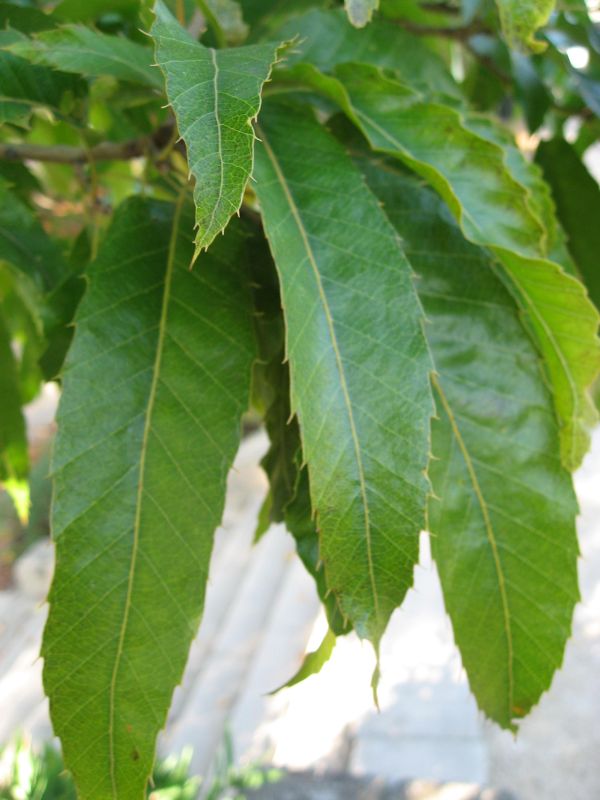
Sawtooth oak grows in a large range of temperatures. It is adaptable in hardiness zones 5-9.It prefers well drained soil with adequate ventilation in the tree canopy. Sawtooth oak will not do well in standing water. Also, leaf molds pose serious threats if the leaves cannot dry out in the wind. So make sure they are not stuck against buildings where rainwater may drain.
Watering
Originating from East Asia, sawtooth oak is adapted to moderate rainfall and seasonal changes in its native habitat. This species exhibits a preference for consistent moisture but can tolerate short dry periods. Watering once every 1-2 weeks suffices to mimic its natural water intake rhythm. Sawtooth oak thrives outdoors where it can benefit from the interplay of rain cycles and soil drainage, making it a robust choice for temperate climates. In particular, as a deciduous plant, sawtooth oak’s water needs fluctuate with the seasons, requiring less hydration during its dormancy in winter.
Soil
Ideal soils are well-drained loam, sandy-loam, or sandy-clay soils. Some alluvial fan areas and silts harbor good oaks stands. The key in all of these is that the soil is well-drained. Standing water cannot be tolerated by oaks.
Fertilizing
For sawtooth oak, fertilization enhances vitality and supports growth. Use balanced nutrition fertilizers, transitioning to high nitrogen variants in early growth stages. Apply fertilizers once annually, ideally in the spring, following the product’s recommended rate. Young sawtooth oak benefits from more frequent fertilization to encourage establishment.
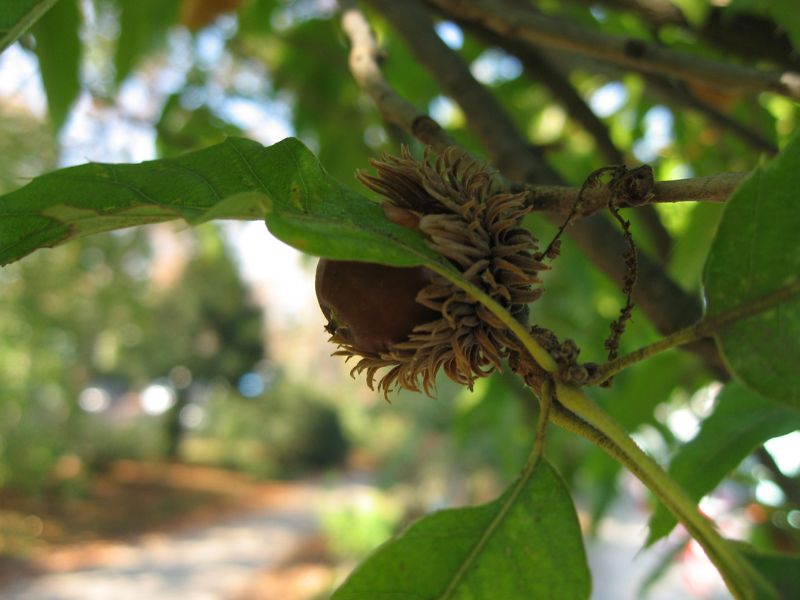
During active growth, adjust applications to sustain development, while mature sawtooth oak requires less. Always water thoroughly post-fertilization to aid absorption and prevent root burn. Safety tip: Avoid over-fertilization to protect sawtooth oak’s root system and local ecosystems. Precision in following guidelines ensures robust sawtooth oak health.
Planting Instructions
The Sawtooth Oak Tree shows admirable adaptability to soils overall but prefers to grow in soils that are acidic with great drainage. When planting this tree, begin by digging a hole that is as deep as the root ball is tall and about twice as wide. Loosen the root ball itself to help the roots spread once planted. You should also ensure your Sawtooth Oak Tree has plenty of lateral and overhead space as it will become very tall and wide at maturity.
Pruning
Branches should be pruned to avoid moist pockets or where heavy branches may fall on people or buildings. Avoid having branches that grow with leaves tight together or pressed against buildings. If rain collects in these pockets then molds and fungi can attack. Sawtooth oak love having their leaves dry out in a well ventilated breeze.
To ensure that no danger occurs from the brittle hardwood branches, make sure that heavy branches do not hang over walking paths or outbuildings. Also, do not let children play near oaks in a thunderstorm as they are susceptible to falling branches and lightning strikes.
Transplanting
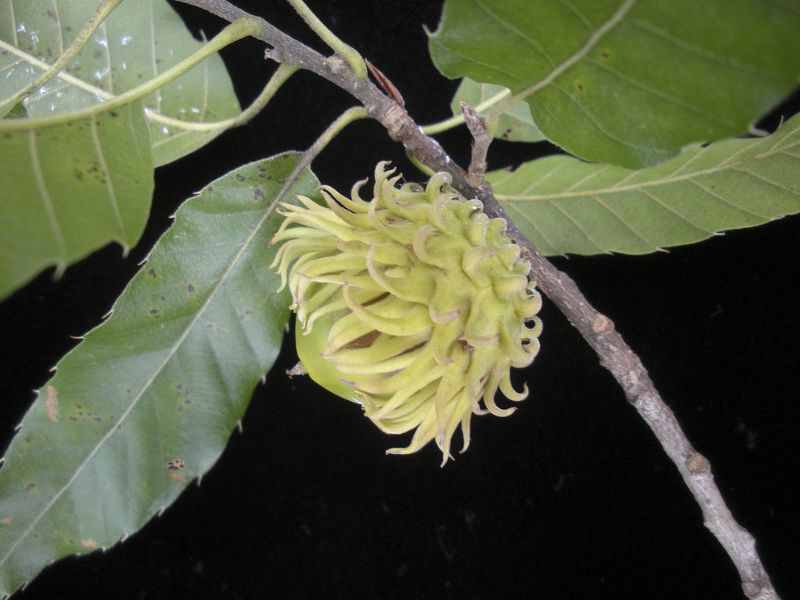
The preferable season to transplant sawtooth oak is in its dormant stage, or late fall to early winter as it aids root development without the stress of leafing or fruiting. Choose a location with well-draining soil and full sun exposure. When transplanting, avoid deep planting; sawtooth oak thrive when their root flares are visible. It’s best to source the information from expert horticulturists or credible resources to ensure a successful transplant.
Pests and Diseases
Overall, the Sawtooth Oak Tree has excellent pest and disease resistance which means keeping this plant healthy should be easy in most cases. With that said, some pest and disease issues are possible. Oak wilt, rot, leaf blisters and powdery mildew can all affect this tree. Sawtooth Oak trees may also experience infestations of oak lace bugs, oak skeletonizers and borers. On the positive side, your Sawtooth Oak Tree will also attract different forms of wildlife as it is a great food source for squirrels, deer and other animals.
III. Uses and Benefits
- Ornamental uses
The versatile sawtooth oak provides endless interest in woodland gardens, especially with its colorful autumn foliage. Its large branches make it a great shade tree or specimen tree. You can also plant it in butterfly or wildlife gardens since its spring blooms and acorns are popular food sources for butterflies, birds, and squirrels.
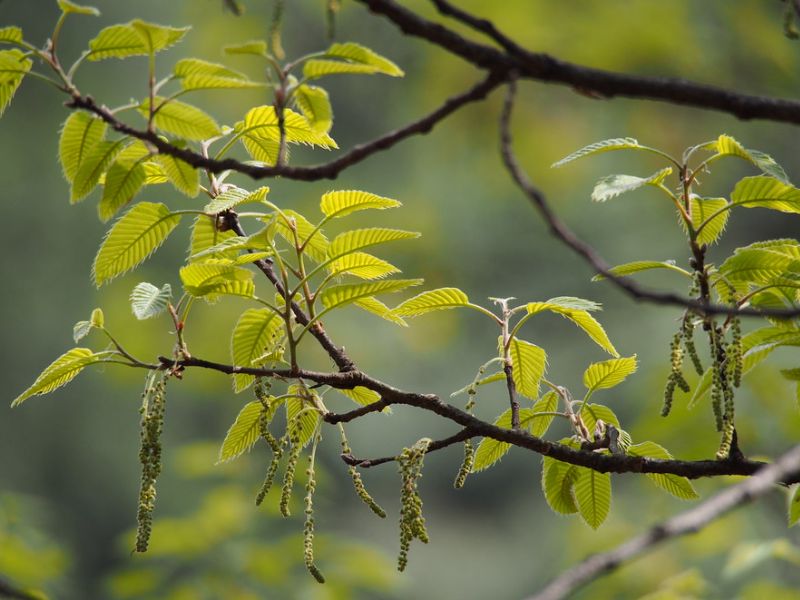
- Other uses
Sawtooth oak is widely planted in eastern North America and is naturalized in scattered locations; it is also occasionally planted in Europe but has not naturalized there. Most planting in North America was carried out for wildlife food provision, as the species tends to bear heavier crops of acorns than other native American oak species; however, the bitterness of the acorns makes it less suitable for this purpose, and sawtooth oak is becoming a problematic invasive species in some areas and states, such as Louisiana.
Sawtooth oak trees also grow at a faster rate which helps it compete against native trees. The wood has many of the characteristics of other oaks, but is very prone to crack and split and hence is relegated to such uses as fencing.
Charcoal made using this wood is used especially for the braziers for heating water for the Japanese tea ceremony.
Find Where to Buy the Best Sawthorn Oak (Quercus acutissima)

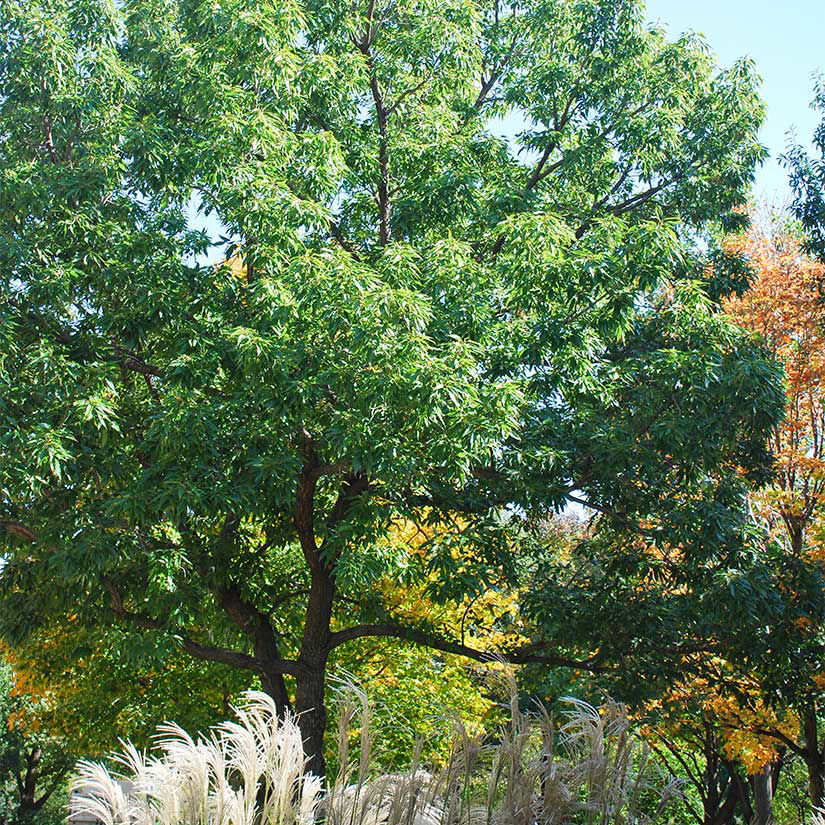






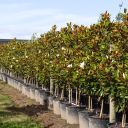



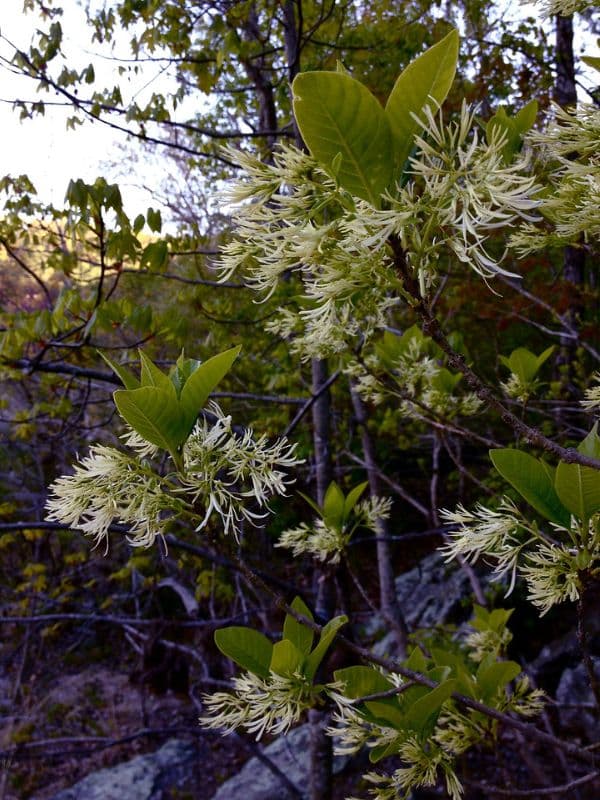




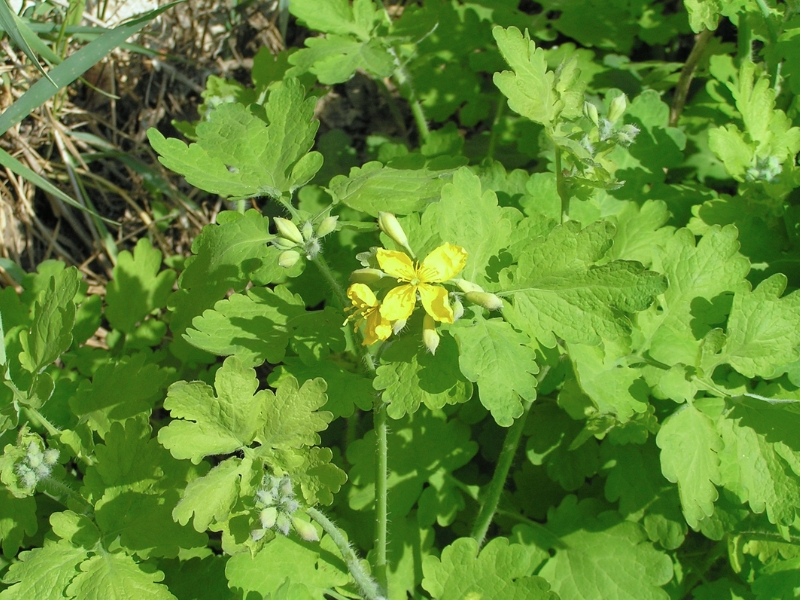
Leave a Reply